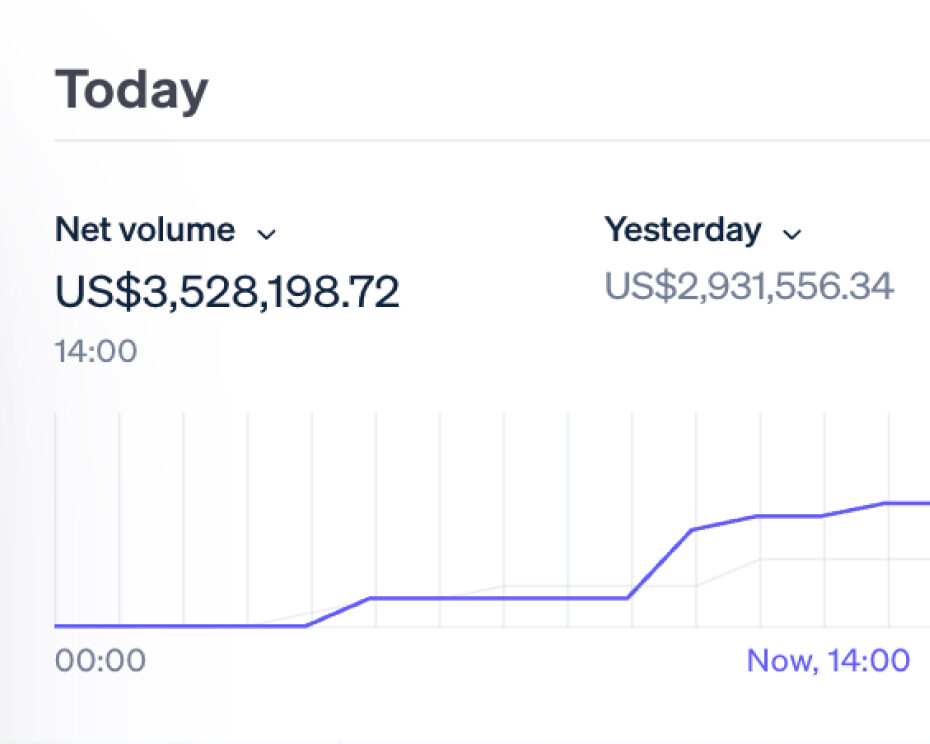How to Increase Profit Margins in Manufacturing
Our Future of Pricing for Manufacturing Report found that 90% of businesses said global uncertainties, such as the pandemic, have impacted the effective management of pricing across their supply chain. This article will explore the concept of profit margin in manufacturing, discuss what constitutes a good profit margin, and provide effective strategies to increase profit margins in manufacturing operations, especially during turbulent times. Whether you are a business owner, manager, or a professional in the manufacturing industry, these insights will help you optimize your profitability and drive sustainable growth.
Table of Contents
- What is a net profit margins in manufacturing?
- What is a gross profit margin?
- What is a standard profit margin in manufacturing?
- What’s a good profit margin in manufacturing?
- What causes profit margins to decline?
- 11 Ways to increase profit margins
- Empower your manufacturing business with complete pricing visibility
What is a net profit margins in manufacturing?
Net profit margins in manufacturing refer to the percentage of revenue that a company retains as profit after deducting all production costs, including raw materials, labor, overhead expenses, and other operating expenses. It is a key financial metric that measures a company’s ability to generate profits from its manufacturing operations.
To calculate the net profit margin, divide the net profit by the revenue and multiply the result by 100 to express it as a percentage. The profit margin formula is as follows:
Net Profit Margin = (Net Profit / Revenue) * 100
The profit margin provides insights into the efficiency and profitability of a manufacturing business. A higher profit margin indicates that the company effectively controls costs and generates a significant return on its investments.
What is a gross profit margin?
A gross profit margin is a financial metric used to evaluate a company’s financial health. It represents a company’s profitability after deducting the cost of goods sold (COGS) from its net sales. In simpler terms, gross profit margin is the proportion of revenue that remains after accounting for the direct costs associated with producing goods or services.
The gross profit margin formula is as follows:
Gross Profit Margin = (Net Sales – COGS) / Net Sales
In this formula, “Net Sales” refers to the total amount of revenue generated from sales, while “COGS” represents the cost of goods sold, including direct labor costs and the costs of materials used in production.
Gross profit margin is typically expressed as a percentage and is commonly referred to as the gross margin ratio. It is an important metric for analyzing a company’s efficiency in converting sales into profits before considering other expenses, such as selling, general, and administrative costs. Comparing gross profit margins across companies or industry benchmarks can provide insights into a company’s competitive position and operational effectiveness.
What is a standard profit margin in manufacturing?
The standard margin in manufacturing refers to the average profit margin within a specific industry or market segment. It serves as a benchmark to evaluate the profitability of manufacturing companies and can vary across different sectors.
What’s a good profit margin in manufacturing?
The ideal profit margin in manufacturing can vary depending on the industry, company size, and market conditions. However, as a general guideline, a good profit margin for manufacturing companies typically falls within the range of 10% to 20%. It’s important to note that a company’s profit margins can vary significantly across different manufacturing sectors and business models. For example, high-volume, low-cost producers may have lower profit margins than specialized, niche manufacturers.
To determine whether your profit margin is favorable, it’s crucial to benchmark it against industry standards and competitors. Analyzing financial statements and conducting market research can provide valuable insights into the typical profit margins within your sector.
What causes profit margins to decline?
Profit margins in manufacturing can decline due to various internal and external factors. Some common causes include:
Rising production costs
Increases in raw material prices, labor costs, energy expenses, or regulatory compliance costs can erode profit margins.
Inefficient operations
Inadequate production planning, suboptimal capacity utilization, inefficient use of resources, and poor inventory management can negatively impact profitability.
Intense competition
Competitors offering similar products at lower prices can exert downward pressure on profit margins, forcing manufacturers to reduce prices to remain competitive.
Market volatility
Fluctuations in demand, changes in consumer preferences, economic downturns, or disruptions in the supply chain can affect profit margins.
Lack of innovation
Failure to invest in research and development, technological advancements, or product differentiation can limit the ability to command higher prices and increase profit margins.

11 Ways to increase profit margins
Many manufacturers operate on the basis that more sales equal more profits, but as we discover, the story is far more complex. Let’s look at some main ways manufacturers can increase their profit margins.
1. Improve cost management
One of the most effective ways to increase profit margins in manufacturing is through efficient cost management. You can reduce operating expenses and enhance profitability by identifying and reducing unnecessary costs, optimizing procurement processes, and negotiating better deals with suppliers. Implementing lean manufacturing practices, such as just-in-time inventory management and waste reduction initiatives, can also lead to substantial cost savings.
2. Enhance operational efficiency
Streamlining manufacturing operations and optimizing production processes can significantly increase profit margins. Identify areas where productivity can be improved, such as reducing cycle times, minimizing machine downtime, and increasing overall equipment effectiveness (OEE). Implementing advanced manufacturing technologies, such as automation and robotics, can boost productivity, reduce labor costs, and enhance overall operational efficiency.
3. Focus on product and pricing strategies
In a competitive manufacturing landscape, developing high-quality products and setting competitive prices are crucial to increase profit margins. Conduct market research to understand customer demands and preferences and align your product offerings accordingly. Differentiate your products through innovation, superior quality, or unique features that provide value to customers.
4. Embrace intelligent pricing
Most manufacturers and pricing teams are drowning in data and spreadsheets. Intelligent pricing software like Flintfox means businesses can take an agile, automated approach to pricing. With the help of advanced, ERP-integrated pricing platforms, teams can stay on top of market prices in real-time and set the perfect price for every selling opportunity. By incorporating intelligent workflows, pricing teams can quickly respond to changes and adjust centrally instead of wasting time on manual updates. This means manufacturing companies can stay ahead of supply chain challenges and potential shortages and make informed decisions in real-time.
5. Optimize supply chain management
Effective supply chain management plays a vital role in improving profit margins. Collaborate closely with suppliers to negotiate favorable terms, reduce lead times, and secure cost-effective sourcing options. Implement supply chain technologies, such as demand forecasting systems and inventory management software, to ensure optimal inventory levels, minimize stockouts, and avoid excess inventory holding costs.
6. Invest in employee training and development
A well-trained and motivated workforce can contribute significantly to improving profit margins. Invest in employee training and development programs to enhance technical skills, improve process efficiency, and foster a culture of continuous improvement. Empower employees to identify cost-saving opportunities, suggest process improvements, and contribute to overall operational excellence.
7. Embrace data-driven decision making
Leverage data analytics and business intelligence tools to gain insights into your manufacturing operations. Monitor key performance indicators (KPIs), track production costs, identify bottlenecks, and make informed decisions based on data-driven analysis.
8. Continuously evaluate and optimize processes
Regularly assess your production processes, identify inefficiencies, and implement process improvements. Encourage a culture of continuous improvement among your employees to drive operational excellence and maximize profit margins.
9. Foster supplier collaboration
Forge strong partnerships with your suppliers and collaborate closely to improve cost efficiencies, reduce lead times, and explore joint cost-saving initiatives. Developing long-term, mutually beneficial relationships with reliable suppliers can positively impact profit margins.
10. Leverage technology and automation
Invest in advanced manufacturing technologies, such as Internet of Things (IoT) devices, robotics, and automation systems, to optimize production processes, minimize errors, and reduce costs. Automating repetitive tasks can free up resources and improve overall efficiency.
11. Focus on customer value
Continuously strive to understand and meet customer needs effectively. Enhance customer satisfaction by delivering high-quality products, providing excellent customer service, and establishing strong customer relationships. Satisfied customers are more likely to pay premium prices, leading to improved profit margins.
Empower your manufacturing business with complete pricing visibility
While we can’t predict future challenges, we can prepare ourselves better to meet them. In the era of disruption, increasing profit margins in manufacturing requires a holistic and intelligent approach to pricing and operations. Flintfox gives you a crystal clear view of how your pricing’s performing to unlock hidden opportunities and incremental gains.
Ready to empower your workforce with automated, accurate pricing and rebates? Get in touch with our team of friendly experts today.
Powerful pricing software supported with deep experience
Flintfox gives you flexibility with your application, unprecedented speed and power from our pricing engine and support from our dedicated team.
